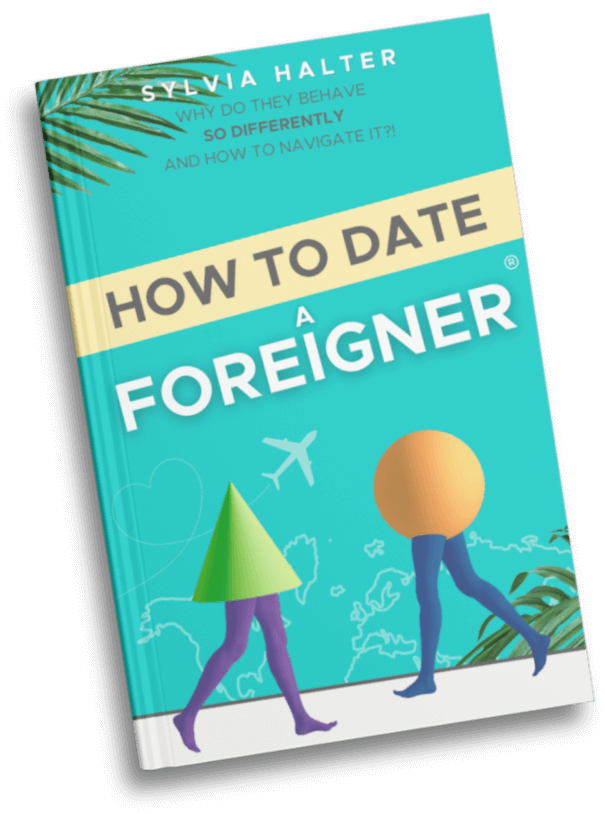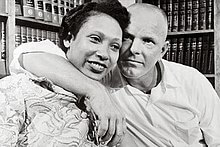
Interracial Relationships
Most of us are familiar with interracial relationships, but we don’t hear much about intercultural ones.
At How to Date a Foreigner, let us explain to you the differences and their forgotten truth. Interracial relationships involve partners who belong to different races (eg. Caucasian, Asian, Hispanic or Black).
This is usually very easy to spot and probably why it is the most talked about. And when it is talked about, somehow it is always the extremes:
either it’s ‘such a cute couple’ or the ‘Omg, I can’t believe he/she is dating xyz’ version.
In the past, such marriages were illegal!
Interracial relationships become legal
It wasn’t long ago when in 1967 the US Supreme Court ruled in favour of the Loving v. Virginia case.
Richard (a white husband) and Mildred Loving (‘a woman of color’) were sentenced for a year in prison in 1958 for marrying each other.
They pleaded guilty to charges of “cohabiting as man and wife, against the peace and dignity of the Commonwealth”
Loving Day – celebrating interracial marriages
In 1967 they appealed their conviction to the Supreme Court of Virginia.
Their case became the landmark case that wiped away state law banning interracial marriage in the United States.
It was followed by an increase in interracial marriages and remembered annually on Loving Day (12th June) – an annual unofficial celebration of interracial marriages.
Just 20 yrs ago… the last state legalized interracial marriages
Despite the Supreme Court’s decision, anti-miscegenation laws remained on the books in several states.
In 2000, Alabama became the last state to adopt its laws to the Supreme Court’s decision.
In June 2007, for the 40th anniversary of the US Supreme Court’s decision, Mildred Loving said the following:
‘My generation was bitterly divided over something that should have been so clear and right. The majority believed that what the judge said, that it was God’s plan to keep people apart, and that government should discriminate against people in love. But I have lived long enough now to see big changes. The older generation’s fears and prejudices have given way, and today’s young people realize that if someone loves someone they have a right to marry.’
‘Mildred Loving for the 40th anniversary of the US Supreme Court’s decision’
Mildred and Richard Loving in 1967
Intercultural dating
Intercultural relationships, on the other hand, are impossible to notice.
If the partners belong to the same race, unless we know their background, we won’t even suspect their intercultural background. Unless one of them has that super strong Scottish accent of course, Aye!.
We are both American. How can our relationship be intercultural?
A Caucasian couple, an Asian couple… are not interracial, but they can easily be in an intercultural relationship. Sometimes even without realizing it.
They could both be American citizens, but let’s say one of them was born and raised in Europe and the other in the USA.
Or maybe they were both born and raised in the USA. However, one of them had Asian immigrant parents who raised them strictly with Asian culture & values.
The other person had Asian heritage but was raised with Western culture & values.
Despite not being able to notice it from the outside, they are in an intercultural relationship.
As the Spring Institute describes it really well on their website: Intercultural relationship ‘focuses on the mutual exchange of ideas and cultural norms and the development of deep relationships. In an intercultural society, no one is left unchanged because everyone learns from one another and grows together.’
Why are intercultural relationships so difficult to detect?
The #1 reason is that when you don’t suspect it, you don’t question it. People believe that they have the same morals, ethics, values and culture as someone else.
Then one day, they realize they were wrong. They resolve it with a smaller or bigger argument and move on – still without questioning it could be based on cultural differences! This is especially true when the couple belongs to the same race.
Secondly, even if they are aware there could be cultural differences, they don’t know what is a good question to ask to find the answer. When you don’t know anything different, how do you ask?
To give you a very simple example:
After living most of my life in Europe, one day I asked my friend in Vietnam: ‘How do you date?’ I was curious, but I didn’t even know what I was exactly curious about. Well, deep inside, this is was my question:
‘Tell me everything that is different in your dating culture from mine.’ – Which is great, but where do we go from here?!
She doesn’t know my dating culture, I don’t know hers. So her answer was as bad or unexciting as my question: ‘We go to a coffee shop?!’
Eventually, this conversation turned into an hours-long discussion over dinner, to find out that my definition of ‘dating’ is very different from her definition of ‘dating’!
So not only our culture was different, but our vocabulary too! Have I mentioned we realized this after a FEW hours?!
Is it an intercultural or cross-cultural relationship?
The difference between intercultural and cross-cultural relationship is, that the later is the comparison of different cultures.
According to the Spring Institute: ’In cross-cultural communication, differences are understood and acknowledged, and can bring about individual change, but not collective transformations. In cross-cultural societies, one culture is often considered “the norm” and all other cultures are compared or contrasted to the dominant culture.’
Hence at How to Date a Foreigner we focus on interracial and intercultural relationships rather than cross-cultural: because we appreciate the mutual exchange of ideas and the development of deep relationships.
Interethnic relationships
We couldn’t close this blog post without mentioning and clarifying interethnic relationships. You rightly wonder (as many people do) whether it’s the same as interracial relationships.
If interracial or intercultural differences weren’t enough to handle on their own, interethnic relationships are a mixture of both.
As most people don’t know the exact definition of interethnic, they often use it instead of interracial.
Thanks to Mildred and Richard Loving, today interracial, intercultural and interethnic relationships are all legal! Don’t forget to remember them on Loving Day!
Let us know your thoughts below! Did you know this history?

